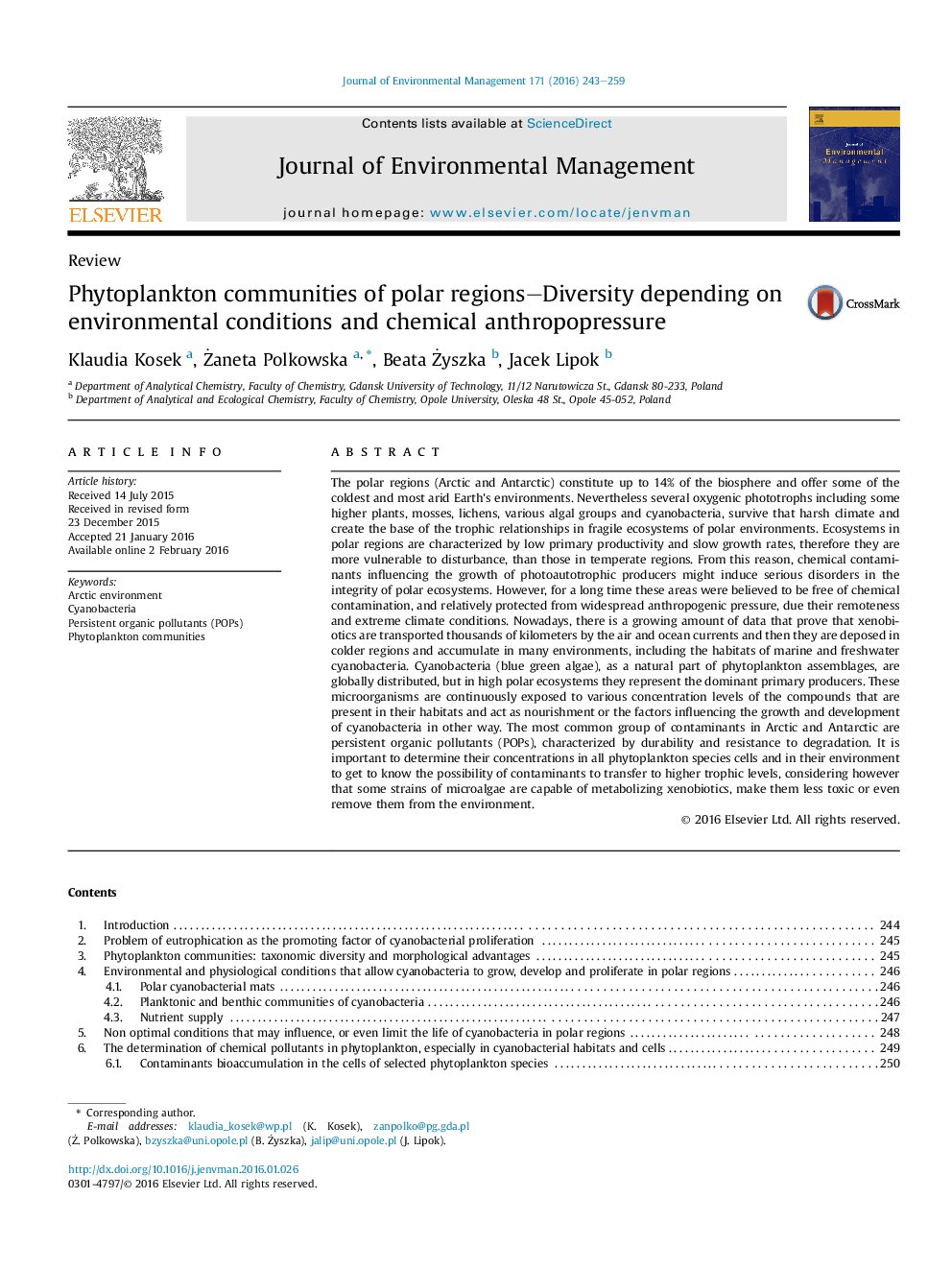| کد مقاله | کد نشریه | سال انتشار | مقاله انگلیسی | نسخه تمام متن |
|---|---|---|---|---|
| 1055317 | 1485241 | 2016 | 17 صفحه PDF | دانلود رایگان |
• Cyanobacteria have developed range of physiological strategies to deal with harsh conditions.
• Cyanobacterial mats are dominant features of polar lake, pond, and river ecosystems.
• The phytoplankton species living on Svalbard are prone to pollution storage.
• Phytoplankton communities have been used for removal or detoxification of environmental contaminants.
The polar regions (Arctic and Antarctic) constitute up to 14% of the biosphere and offer some of the coldest and most arid Earth's environments. Nevertheless several oxygenic phototrophs including some higher plants, mosses, lichens, various algal groups and cyanobacteria, survive that harsh climate and create the base of the trophic relationships in fragile ecosystems of polar environments. Ecosystems in polar regions are characterized by low primary productivity and slow growth rates, therefore they are more vulnerable to disturbance, than those in temperate regions. From this reason, chemical contaminants influencing the growth of photoautotrophic producers might induce serious disorders in the integrity of polar ecosystems. However, for a long time these areas were believed to be free of chemical contamination, and relatively protected from widespread anthropogenic pressure, due their remoteness and extreme climate conditions. Nowadays, there is a growing amount of data that prove that xenobiotics are transported thousands of kilometers by the air and ocean currents and then they are deposed in colder regions and accumulate in many environments, including the habitats of marine and freshwater cyanobacteria. Cyanobacteria (blue green algae), as a natural part of phytoplankton assemblages, are globally distributed, but in high polar ecosystems they represent the dominant primary producers. These microorganisms are continuously exposed to various concentration levels of the compounds that are present in their habitats and act as nourishment or the factors influencing the growth and development of cyanobacteria in other way. The most common group of contaminants in Arctic and Antarctic are persistent organic pollutants (POPs), characterized by durability and resistance to degradation. It is important to determine their concentrations in all phytoplankton species cells and in their environment to get to know the possibility of contaminants to transfer to higher trophic levels, considering however that some strains of microalgae are capable of metabolizing xenobiotics, make them less toxic or even remove them from the environment.
Journal: Journal of Environmental Management - Volume 171, 15 April 2016, Pages 243–259
